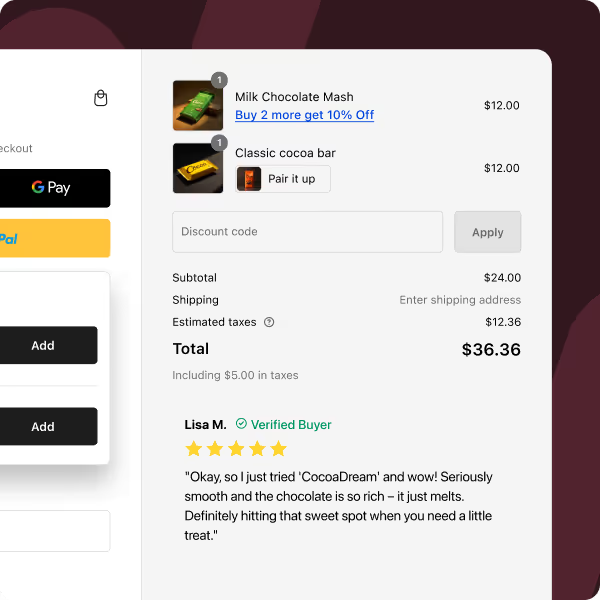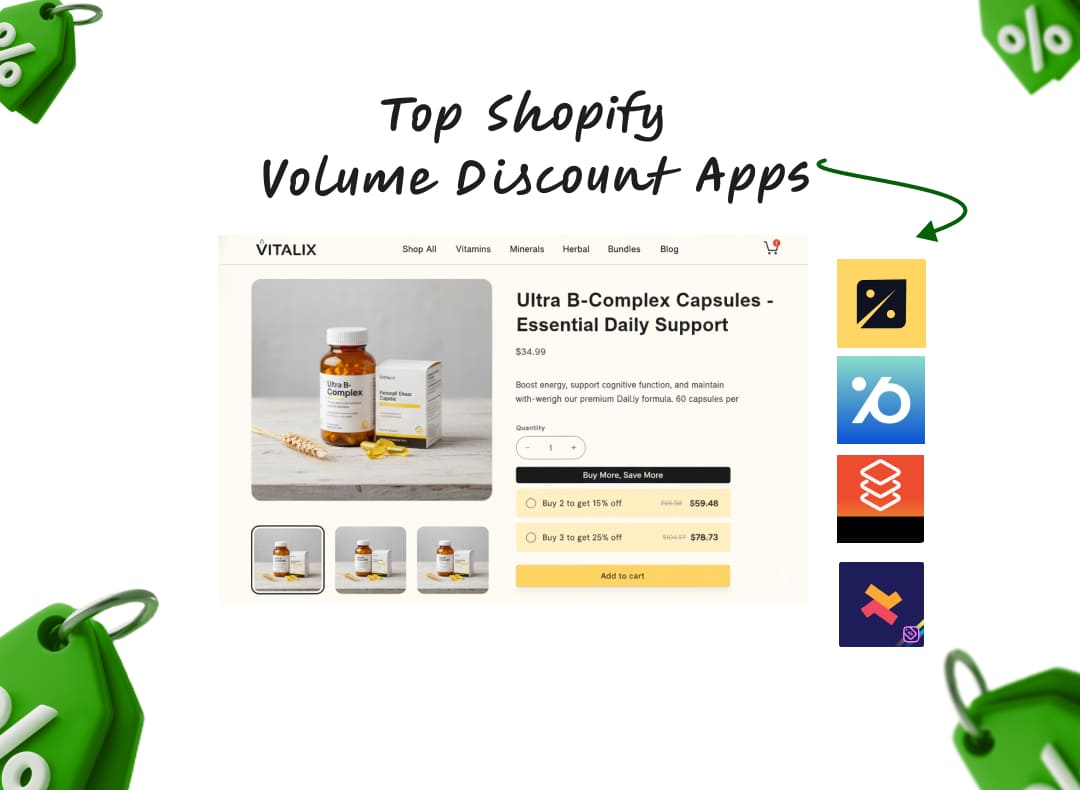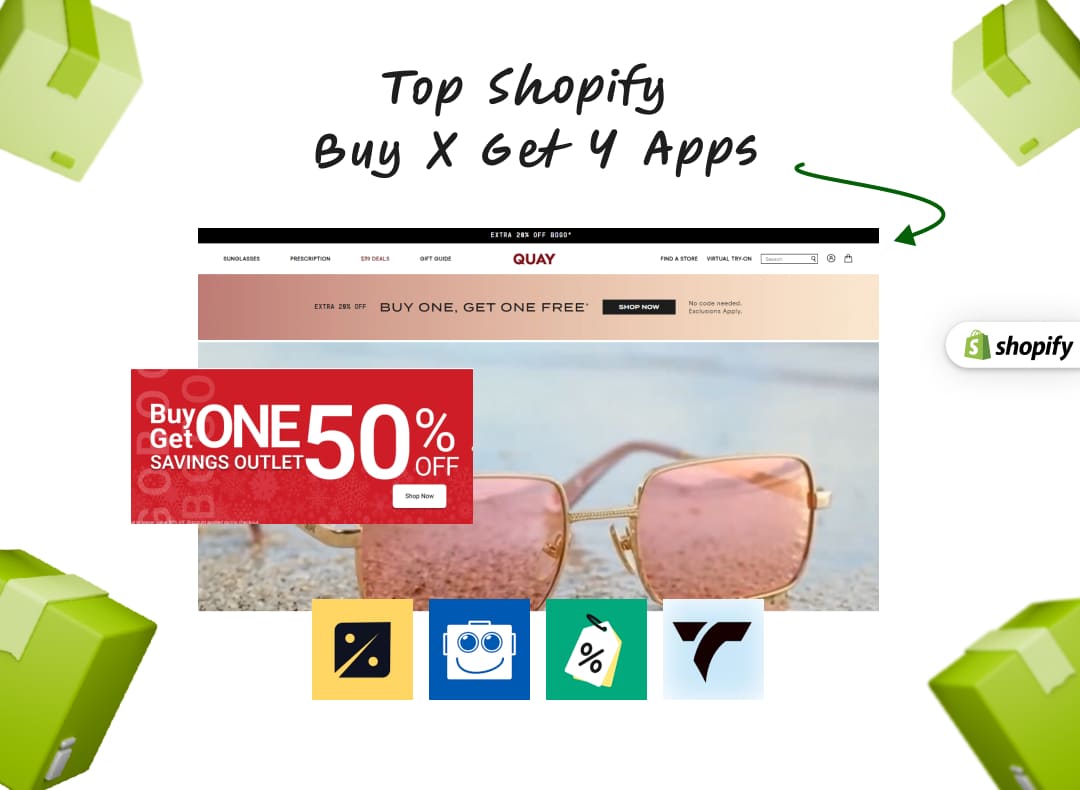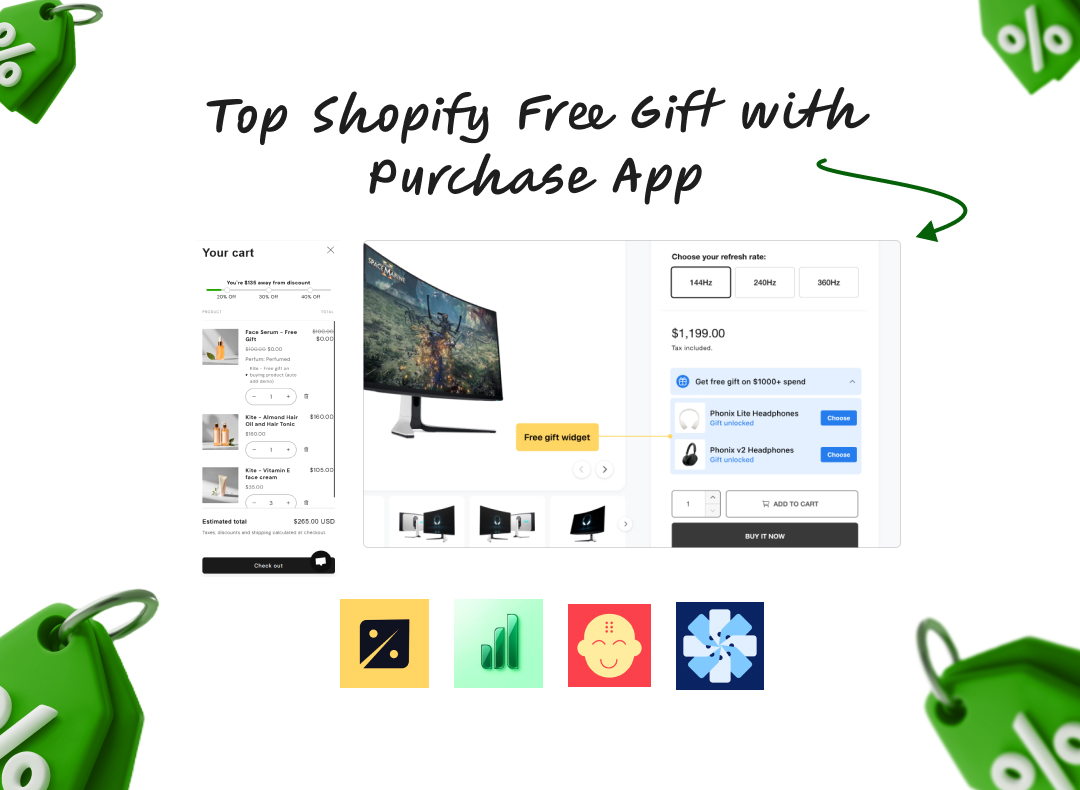Interacting with a customer post-purchase is just as important as the way you interact & communicate with them pre-purchase. Post-purchase surveys are an essential tool for Shopify stores to gather customer feedback, improve product offerings, and boost retention. These surveys provide valuable insights into the customer journey, helping merchants optimize various aspects of their business, from website design, and marketing to product offerings. In this guide, we’ll explore the different types of post-purchase surveys, where to conduct them, and best practices for maximizing their effectiveness. Let’s get into it.
What is a Post-Purchase Survey?
Post-purchase survey is a research tool used by businesses to gather customer insights after they complete their purchase. This survey is essentially a short questionnaire aimed at uncovering insights into customer satisfaction, buying decisions, user behavior, product feedback, and more.
By collecting this information shortly after purchase, companies can capture data when the experience is at the top of a customer's mind. This is especially true for user behavior in terms of the product (do they brush twice or thrice a day?) or user experience (did they remember their discount codes or would it be more helpful if we auto-add a discount code).
Why are Post-Purchase Surveys Crucial for Shopify Stores?
Post-purchase surveys offer a direct way to understand your customers’ experiences after they complete a purchase. By collecting feedback, Shopify merchants like you can identify areas of improvement, adjust strategies, and provide a better overall shopping experience. In fact, 41% of repeat purchases are done by satisfied customers. Some key benefits of post-purchase surveys are-
Enhance Conversion Rates- By identifying barriers that may hinder purchases, Shopify stores can make necessary adjustments to the website to improve conversion rates.
Improve Products- Customer feedback provides essential insights that can guide product development and feature enhancements.
Improve Packaging- Like products, packaging-based surveys can help you improve on your primary and secondary packaging.
Gain Marketing Insights- Demographic surveys allow businesses to segment their customer base beyond their transactions and tailor marketing communications accordingly. Likewise, post-purchase surveys also help with understanding customer satisfaction and the source of traffic.
Cultivate Customer Loyalty- Satisfied customers are more likely to return and recommend the brand to others. In effect, you increase customer lifetime value.
Gather First-Party Data- As we head into a cookieless world, every data point will become extremely valuable. You can use post-purchase surveys as an additional layer of first-party data.
Make Data-Driven Decisions- Insights from post-purchase surveys, overall, equip e-commerce businesses with valuable data that impact key functions like marketing, product development, website, and operations.
Where to Conduct Post-Purchase Surveys?
Where should you conduct your post-purchase survey? The effectiveness of your survey depends not only on the questions you ask but also on where and when you conduct the survey. Here are some ideal locations for conducting post-purchase surveys:
1. Thank You Page
The ‘thank you’ page is the page that appears as soon as you finish checking out. It's an ideal page to place short post-purchase surveys. Want to create a thank you page post-purchase survey? Then Checkout Wiz is the app you need. It's the most feature pack checkout app which includes powerful post-purchase survey capabilities for both Shopify and Shopify Plus stores.
2. Order Status Page
The order status page is a page that customers refer to, to track their orders. Since customers are more engaged when viewing this page, it is a good place to place a post-purchase survey. Again, you can use Checkout Wiz to create impactful post-purchase surveys on the order status page.
PRO-TIP: Use Checkout Wiz to create powerful post-purchase surveys with minutes on your thank you page and order status page. Checkout Wiz is a feature-packed Shopify checkout app that also helps you create powerful post-checkout experiences.
3. Follow-Up Email Surveys
Sending a post-purchase survey via email is another way to reach out to customers. It's a good alternative for capturing customer data especially when you fail to gather responses directly on the website.
Another approach is to send the survey after the product has been delivered. This gives customers the time & space to reflect on their overall experience. This method effectively gathers detailed feedback about the product and delivery process.
Note: The effectiveness of email surveys fully depends on your email marketing capabilities. Your chances are getting a response are lesser than that on the thank you or order confirmation page. If administering a survey on email is complicated, try directing recipients back to the order status page.
4. In-App or Website Pop-Ups
Pop-up surveys triggered after a purchase can capture feedback at the ripe moment. You can trigger these pop-ups to appear on the thank you page or order confirmation page. These quick, concise surveys urge customers to respond immediately. They can be a great way to ask simple questions about their overall shopping experience.
The cons of pop-ups is that customers find them intrusive and intuitively close them.
5. SMS Surveys
SMS is a fast and convenient way to collect feedback, particularly from mobile-first customers. Sending a short SMS survey immediately after a purchase or delivery can yield quick, valuable responses due to the high open and engagement rates of text messages.
6. Customer Support Interaction
If a customer has contacted your support team, following up with a survey about their overall experience is always recommended. Getting in touch with a customer one-on-one is a huge opportunity. You can use this interaction to ask some open-ended, exploratory questions too.
Another way to go about this is to call up customers to confirm their order. This is useful in countries where cash on delivery is a preferred mode of payment. Use this opportunity to engage customers in a quick survey.
Types of Post-Purchase Surveys
Post-purchase surveys come in various forms and the type you select depends on your goal for the survey. Here are the most commonly used post purchase questionnaires.
1. Customer Profiling Surveys
This type of post-purchase survey is used to understand your customer’s demographics closely. It enables you to create realistic customer segments that can be used to sharpen marketing initiatives and introduce new products. Overall, it is always good to know if your actual customers are close to the target market you had set out to achieve when setting up the store. Remember, many customers may not be comfortable with divulging this information. But keep persisting and over time you will have collected a significant data set to work with.
Example Questions
- What is your age?
(e.g., under 18, 18-24, 25-34, 35-44, 45-54, 55-64, 65 and older) - What is your gender?
(e.g., male, female, non-binary, prefer not to say) - Where do you live?
(Optional: Please specify your city or region.) - What is your current employment status?
(e.g., employed full-time, employed part-time, self-employed, student, unemployed, retired) - What is your highest level of education?
(e.g., high school, some college, bachelor’s degree, master’s degree, other) - What are your hobbies or interests?
(Optional: Please list a few.) - How often do you shop online?
(e.g., every day, a few times a week, once a week, a few times a month, rarely) - What types of products do you usually buy online?
(e.g., clothing, electronics, home goods, beauty products, food, other) - How do you prefer to pay when shopping online?
(e.g., credit/debit card, PayPal, bank transfer, cash on delivery, other) - What factors are most important to you when shopping online?
(e.g., price, quality, customer reviews, brand reputation, shipping speed) - What type of promotions do you like to receive?
(e.g., discounts, free shipping, special offers, new product announcements) - How often do you read customer reviews before making a purchase?
(e.g., always, often, sometimes, rarely, never)
2. Customer Satisfaction Surveys (+ NPS Surveys)
The main goal of these surveys is to gauge the net promoter score (NPS). This score measures how likely customers are to recommend your products to their friends and family. Apart from NPS questions, typical satisfaction survey questions focus on product variety, the purchase process, the payment process, shipping, and delivery.
Example Questions
- How likely are you to recommend our store to friends or family?
- How satisfied are you with your overall shopping experience in our store?
- How would you rate the ease of navigating our website?
- How satisfied are you with the variety of products available?
- How would you rate the quality of the product(s) you purchased?
- Was the product description on the website accurate?
- How would you rate your checkout experience?
- Did you encounter any issues during the payment process?
- How satisfied are you with the payment options available in our store?
- How would you rate the speed of delivery for your order?
- Were you satisfied with the condition of the product upon arrival?
- Did you need to contact customer support for this purchase?
- If yes, how satisfied were you with the support you received?
- What did you like the most about your shopping experience?
- What can we improve to make your experience better in the future?
3. Source Attribution Surveys (Product Discovery)
These surveys are designed to understand how customers found your store or specific products. You can ask customers which marketing channel influenced their purchase decision (social media, paid ads, organic search, etc.). The insights help fine-tune your marketing efforts and allocate budgets to the most effective channels.
Example Questions
- How did you first hear about our store?
(e.g., social media, search engine, friend/family referral, online ad, email, blog post, other) - Which platform or channel brought you to our website today?
(e.g., Google, Facebook, Instagram, YouTube, Pinterest, Twitter, email newsletter, other) - What influenced your decision to visit our store?
(e.g., recommendation from a friend, online reviews, social media post, influencer/blogger, paid advertisement, product search, other) - Which of our marketing efforts have you seen before making your purchase?
(e.g., email campaign, social media post, Google ad, Instagram ad, SMS, none) - How did you find out about the specific product you purchased?
(e.g., browsing the website, direct search, ad on social media, email newsletter, influencer/blogger post, other) - Did you visit our website directly, or did you follow a link from another source?
(e.g., direct visit, link from Google, link from social media, link from email) - If you found us through social media, which platform did you engage with?
(e.g., Facebook, Instagram, TikTok, Pinterest, YouTube, LinkedIn, Twitter) - How often do you interact with our brand on social media or through email?
(e.g., regularly, occasionally, rarely, first time) - Did any online reviews or user-generated content influence your decision to shop with us?
(e.g., yes, no) - Have you ever referred our store to others?
(e.g., yes, no, not yet but I would) - Did you use a discount code, promotion, or offer to make this purchase? If yes, where did you see the offer?
(e.g., email, social media, Google ad, influencer, website banner) - Did you engage with our content through any influencers or brand ambassadors before making this purchase?
(e.g., yes, no) - How important were online advertisements in your decision to purchase from us?
(e.g., very important, somewhat important, not important) - What is the primary reason you chose our store over others?
(e.g., recommendation, social media, ads, reviews, product selection, pricing, other) - Would you like to see more promotions or exclusive deals on any of these channels?
(e.g., email, Instagram, Facebook, YouTube, SMS)
4. Feedback and Suggestion Surveys
The goal of this survey is simply to gather feedback on your store. Answers could be qualitative or quantitative. Qualitative questions are open-ended questions. They help you collect unstructured feedback and suggestions. For example, "What flavor of toothpaste would you like us to introduce next?" or "How can we make your experience better?".
Quantitative feedback would include responses in a rating scale i.e. 1-10 or star ratings. For example, you can ask customers to give you stars out of five, for product quality and product variety.
Example Questions
- How would you rate your overall experience with our store?
- How satisfied are you with the range of products available?
(Optional: Please suggest any products or categories you would like to see in our store.) - Did you find all the product information you needed before making your purchase?
(Optional: What additional details or features would be helpful?) - How satisfied are you with the checkout process?
(Optional: Do you have any suggestions for improving the checkout experience?) - How would you rate your delivery experience?
(Optional: Do you have any recommendations for improving shipping speed or packaging?) - Was there anything that frustrated you during your shopping experience?
(Optional: Please describe what could be done to fix or improve this issue.) - How helpful did you find our customer support?
(Optional: If you contacted customer support, please share any feedback or suggestions for improvement.) - What features or services would you like to see added to improve your shopping experience?
(e.g., personalized recommendations, faster checkout, more payment options, etc.) - Are there any promotions, discounts, or loyalty programs you’d like us to offer?
- Would you recommend our store to others? Why or why not?
(Optional: What could we do to increase the likelihood that you’ll recommend us?) - What do you like most about shopping with us?
- How can we make your next shopping experience even better?
- Do you have any other comments or suggestions for how we can improve?
5. Delivery Experience Surveys
This type of post-purchase survey focuses on the fulfillment process, asking customers to rate aspects such as packaging, shipping speed, and overall satisfaction with delivery. This helps identify any pain points in your logistics and ensures that customers receive their orders on time and in good condition. The delivery experience is just as important as the rest of the shopping experience.
Example Questions
- How would you rate your overall shipping and delivery experience?
- Was your order delivered within the estimated time frame?
(Optional: If not, how long did it take, and how did this impact your experience?) - How satisfied are you with the condition of your package upon arrival?
- Was the packaging secure and appropriate for the items you ordered?
(Optional: Do you have any suggestions for improving our packaging?) - Did you receive timely updates about your order's shipping status (e.g., tracking, and delivery notifications)?
- How satisfied are you with the accuracy of the tracking information provided?
- Did the courier follow your delivery instructions (if any were provided)?
- Was the delivery service courteous and professional?
(Optional: Did you have any issues with the courier service?) - If your order arrived late, was it communicated to you promptly?
- How satisfied are you with the shipping options (e.g., standard, express) available during checkout?
(Optional: Are there any additional shipping methods you would like us to offer?) - How important is shipping speed when choosing to shop with us?
(Optional: What shipping speed would you consider ideal for your future purchases?) - Have you ever experienced an issue with a lost or damaged package? If yes, how was it resolved?
- Was there anything about the delivery process that you found inconvenient or frustrating?
(Optional: What can we improve to make delivery more convenient for you?) - If you experienced any issues with shipping, how satisfied are you with the way our customer service handled the issue?
- Would you recommend our store based on your shipping and delivery experience? Why or why not?
- Do you have any additional comments or suggestions for improving our shipping and delivery service?
6. Upsell and Cross-Sell Surveys
Use these surveys to gather ideas for upsell and cross-sell promotions. Remember, the end-goal is to find ways to improve AOV. You can ask questions like, "What other products would you like to buy with your skirt?" or “Would you have liked special insulated packaging with your product?”. Apart from existing purchase data, such surveys help ideate new types of product recommendation offers.
Example Questions
- Did you purchase any additional items during your last transaction?
(e.g., recommended items, none) - What motivated you to purchase the additional items?
(e.g., recommendation during checkout, promotional offer, product bundling, personal interest) - How satisfied are you with the product recommendations provided during your shopping experience?
(Optional: What specific recommendations did you find helpful or appealing?) - Did you find the recommended items relevant to your initial purchase?
(e.g., very relevant, somewhat relevant, not relevant) - How often do you purchase additional items based on product recommendations when shopping online?
(e.g., always, often, sometimes, rarely, never) - What types of products would you like to see as recommendations?
(e.g., accessories, complementary products, related items) - How do you feel about the pricing of the recommended items?
(e.g., very reasonable, reasonable, neutral, overpriced, very overpriced) - Did you find the product recommendations easy to understand?
(e.g., very easy, easy, neutral, difficult, very difficult) - What improvements would you suggest for our product recommendation strategies?
- Have you ever declined a product recommendation? If so, why?
(e.g., not relevant, too expensive, already owned, not interested) - How likely are you to purchase suggested products if they are presented as bundles or packages?
(e.g., very likely, likely, neutral, unlikely, very unlikely) - Do you prefer receiving product recommendations via email after your purchase or during the checkout process?
- How important are product recommendations in your overall shopping experience?
(e.g., very important, important, neutral, unimportant, very unimportant) - What type of promotions would encourage you to consider recommended items?
(e.g., discounts, free shipping, buy one get one free, loyalty points) - Do you have any additional comments or suggestions regarding our product recommendation practices?
7. Product Development Surveys
Use such post-purchase surveys to collect feedback on potential product improvements or new product ideas. Ask your customers questions such as "What new products would you like to see from us?". Such types of surveys not only engages customers but also helps guide future product releases based on actual demand.
Example Questions
- What kind of products do you usually buy from our store?
(e.g., clothes, electronics, home items, beauty products, others) - Are there any products you wish we offered but don’t have right now?
(Optional: Please share what they are.) - What features are most important to you when buying a product?
(e.g., quality, price, brand name, customer reviews, eco-friendliness) - How do you usually hear about new products?
(e.g., social media, emails from us, our website, friends or family, online ads) - What would make you want to try a new product from us?
(e.g., discounts, free samples, rewards points, good reviews) - How often do you buy new products in your favorite categories?
(e.g., every week, every month, every few months, rarely) - When looking at new products, who do you trust for information?
(e.g., other customers, influencers, experts, our website) - What price range do you think is fair for new products in this category?
(Optional: Please share a range.) - Are there specific brands or types of products you wish we sold?
(Optional: Please list them.) - How likely are you to buy a product if a friend recommends it?
(e.g., very likely, likely, not sure, unlikely, very unlikely) - What would make you hesitate to buy a new product?
(e.g., not enough information, bad reviews, high price, unknown brand) - How important is it for you that new products are eco-friendly or good for the environment?
(e.g., very important, important, not sure, not important) - Would you like to help test new products before we sell them?
(e.g., yes, no) - What extra information would you like to see about new products before buying?
(e.g., detailed descriptions, videos, customer reviews, comparisons) - Do you have any other thoughts or suggestions about new products we should develop?
8. Conversion Rate Optimization Surveys
While your CRO or website development agency may have advanced tools- such surveys help you cover fringe insights that these tools do not cover. These surveys aim to identify any barriers that nearly prevented customers from completing their purchases. By asking questions like, "What almost stopped you from buying today?" you can uncover friction points in your sales funnel and take action to improve the conversion process.
Example Questions
- How easy was it for you to find what you were looking for on our website?
(e.g., very easy, easy, okay, hard, very hard) - Did you have any trouble placing your order?
(e.g., yes, no)
(Optional: If yes, please explain what the problem was.) - How would you rate the information provided about the products?
(e.g., very helpful, helpful, okay, unhelpful, very unhelpful) - Did you find the prices of our products reasonable?
(e.g., very reasonable, reasonable, okay, overpriced, very overpriced) - How do you feel about the number of payment options available?
(e.g., very happy, happy, okay, unhappy, very unhappy) - How satisfied were you with the delivery options offered?
(e.g., very satisfied, satisfied, okay, dissatisfied, very dissatisfied) - What made you decide to complete your purchase?
(e.g., good price, helpful information, easy process, trust in our brand) - Did you receive any unexpected costs during checkout?
(e.g., yes, no)
(Optional: If yes, please explain.) - How likely are you to shop with us again based on your experience?
(e.g., very likely, likely, not sure, unlikely, very unlikely) - What could we do to make your shopping experience better?
(Optional: Please share your ideas.) - Did you find our website visually appealing?
(e.g., very appealing, appealing, okay, unappealing, very unappealing) - How important is it for you to read customer reviews before making a purchase?
(e.g., very important, important, okay, unimportant, very unimportant) - What do you think about our customer service?
(e.g., very good, good, okay, bad, very bad)
(Optional: If you contacted customer service, please share your experience.) - Were you able to easily contact us if you had questions?
(e.g., very easy, easy, okay, hard, very hard) - Do you have any other comments or suggestions to help us improve?
By now you should have an in-depth understanding of the different types of post-purchase surveys and how you could implement them practically. Now is a good time to go back to your current business goals and see areas where there is a gap in customer understanding. Those are the types of post-purchase surveys you should tackle first.
Best Practices for Implementing Post-Purchase Surveys
1. Keep Surveys Short and Focused
To avoid overwhelming customers, keep your surveys crisp and short. Focus on asking a few key questions that directly relate to the customer's recent experience.
2. Avoid Leading Questions
Make sure your questions are unbiased and that they don’t prime customers. Encourage honest responses. Avoid wording questions in a way that might influence how customers respond.
3. Incentivize Participation
Offer small incentives, such as discounts, loyalty points or gift cards, to encourage more customers to participate in your surveys. These rewards also enhance customer engagement and increase the likelihood of future purchases.
4. Leverage Survey Apps
Use Built for Shopify post-purchase survey apps such as Checkout Wiz to automate the process. Remember, Checkout Wiz is integrated with Klaviyo and allows you to further create segments and personalized communication. Dedicated shopify survey apps are easy to set up and execute.
5. Act on Data Driven Insights & Qualitative Feedback
It’s crucial to act on the data-backed insights you receive from your survey. Before you do that, slice and dice your responses and extract all the insights possible. You may also receive qualitative feedback. Whether a customer is offering positive or negative feedback, following up with a thank-you or addressing their concerns can boost loyalty and improve customer relationships.
Conclusion
Post-purchase surveys are a powerful tool for Shopify merchants to unlock key insights into customer behavior, satisfaction, and preferences. By implementing these surveys across various channels and types, merchants can optimize their product offerings, enhance customer experiences, and drive loyalty. Leveraging the correct post-purchase tool is crucial. The data-driven decisions that you gain from these surveys can transform how your e-commerce store operates, ultimately leading to higher conversions and retention.
FAQ
What is a post-purchase review?
A post-purchase review is a feedback mechanism that allows customers to share their experiences and opinions after buying a product or service. These reviews typically cover various aspects, including:
- Product Quality: Customers evaluate whether the product meets their expectations in terms of performance, durability, and overall quality.
- Shopping Experience: Feedback can also focus on the purchasing process, including the website's usability, payment options, shipping speed, and customer service interactions.
- Satisfaction Level: Customers express their overall satisfaction with the purchase and whether they would recommend the product or brand to others.
- Suggestions for Improvement: Customers may offer constructive criticism or suggestions for enhancing the product or service.
Post-purchase reviews are valuable for businesses as they provide insights into customer satisfaction, identify areas for improvement, and help build trust with potential buyers by showcasing authentic feedback from existing customers.

.svg)
.svg)
.svg)
.svg)
.svg)
.svg)
.svg)
.svg)


.svg)
.svg)

.svg)
.svg)







.svg)
.avif)











.svg)




.svg)


